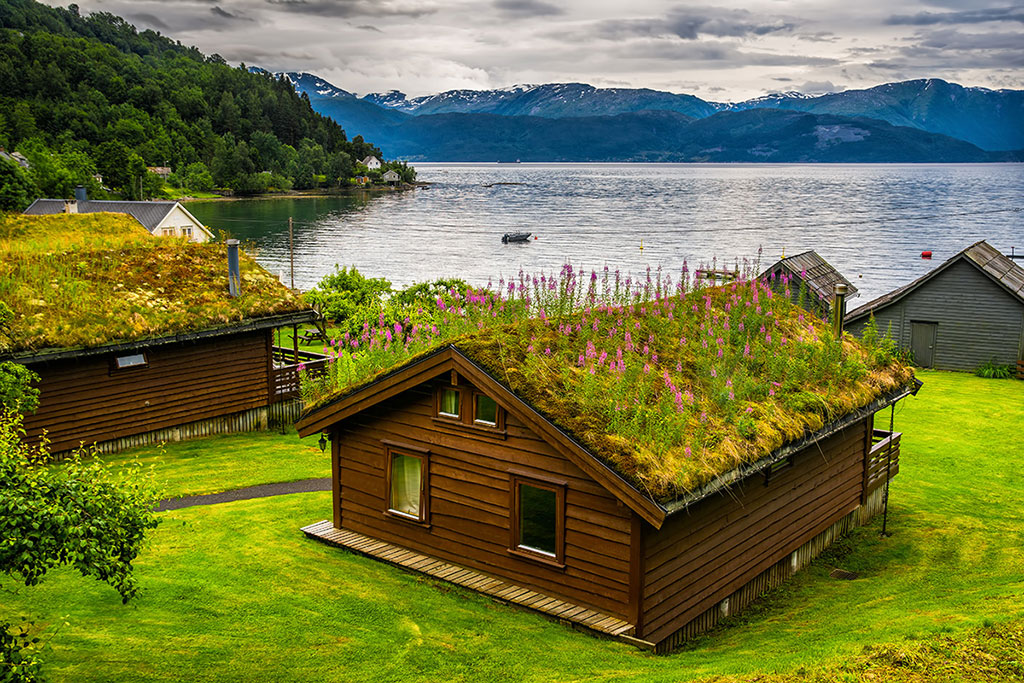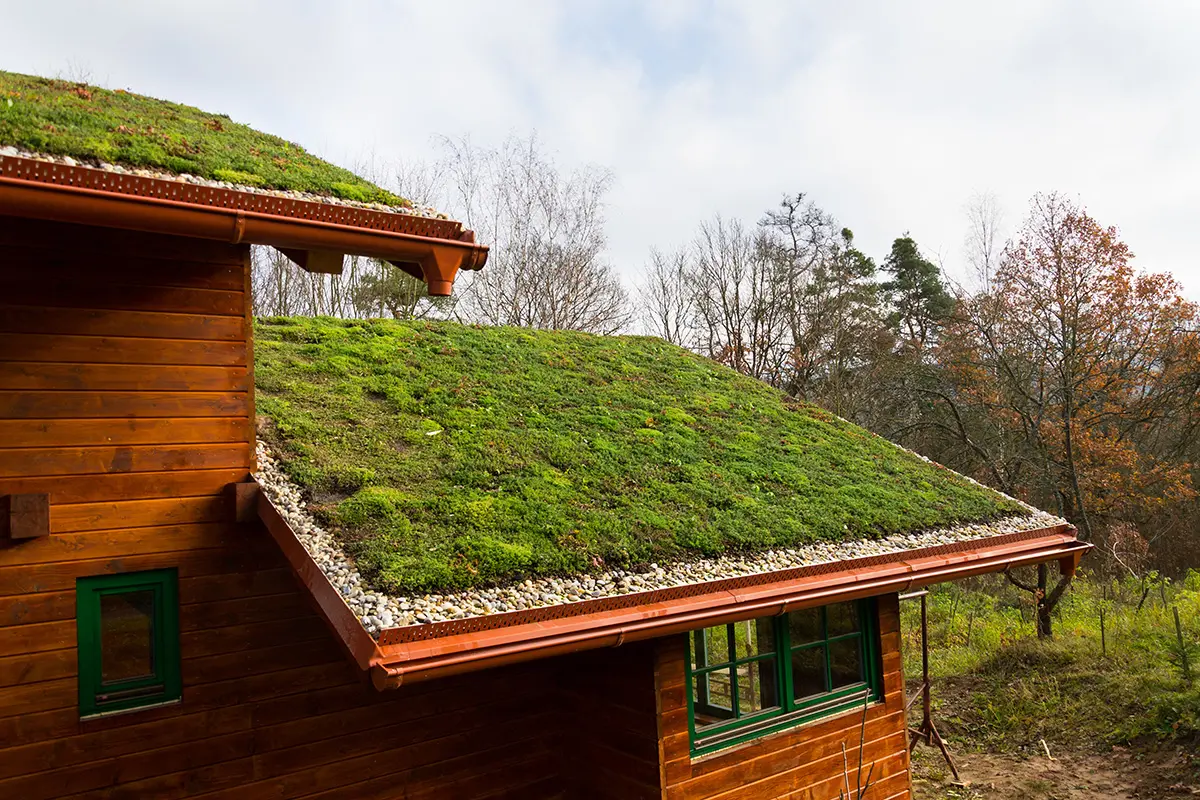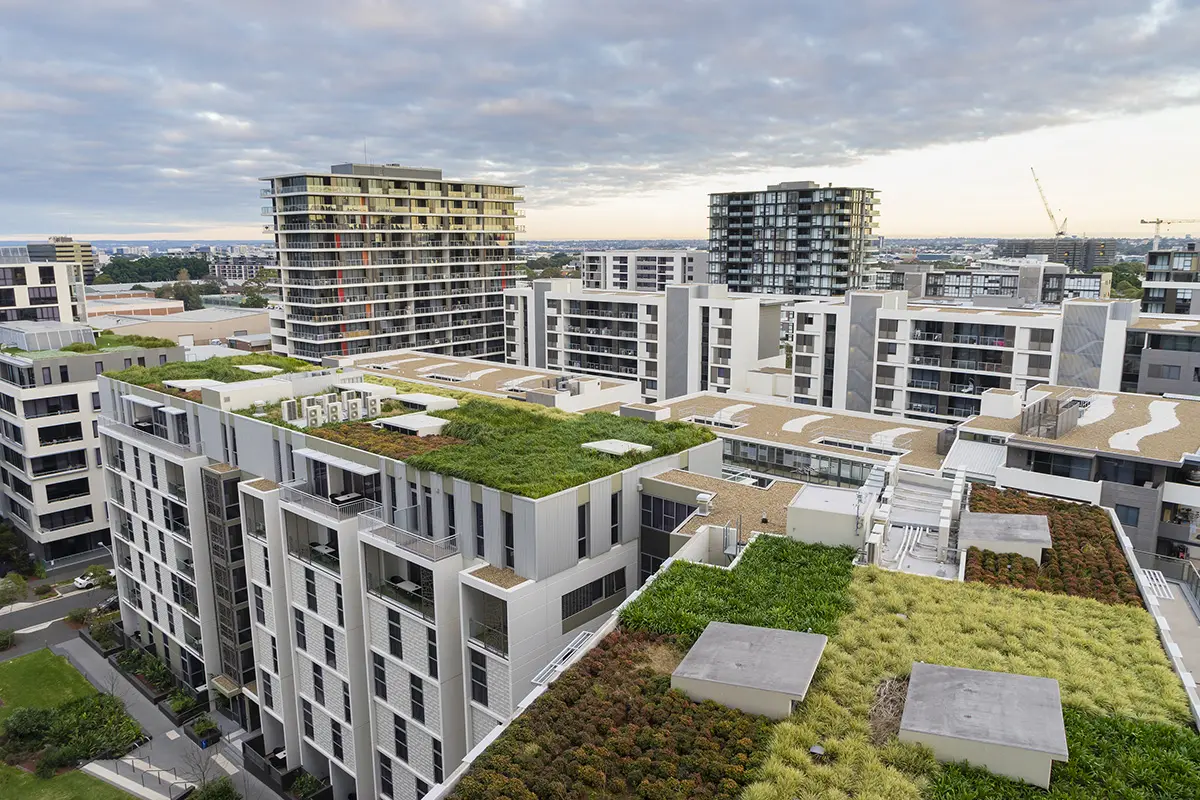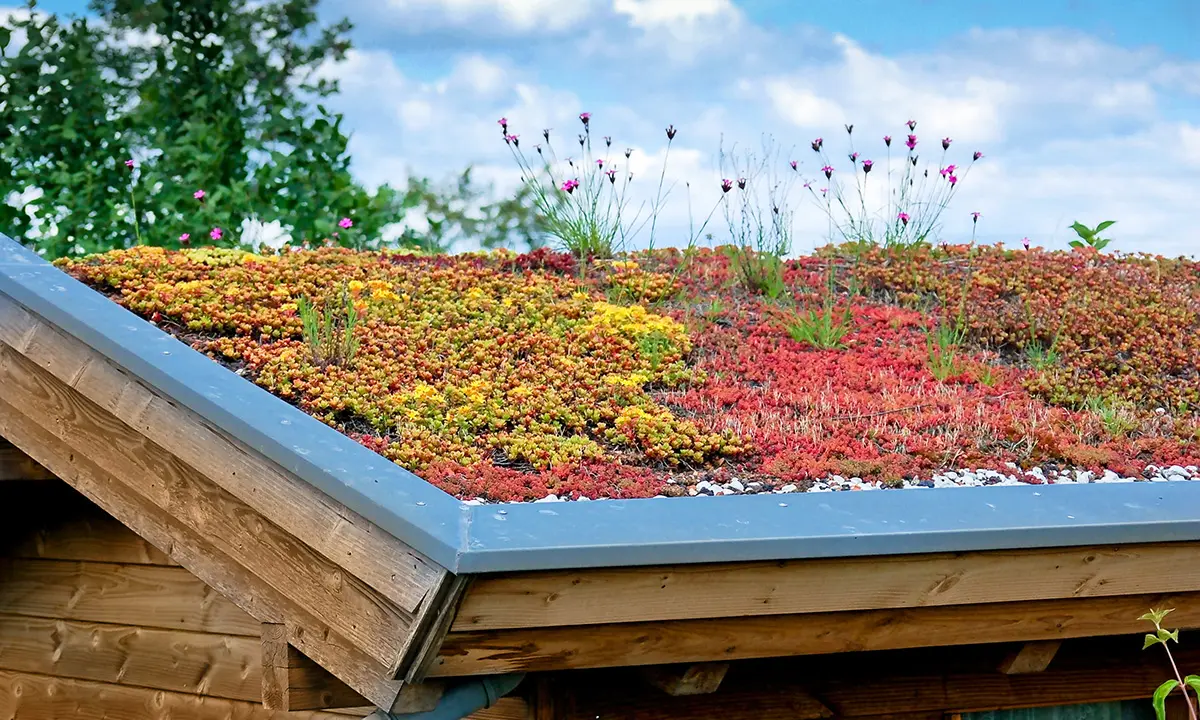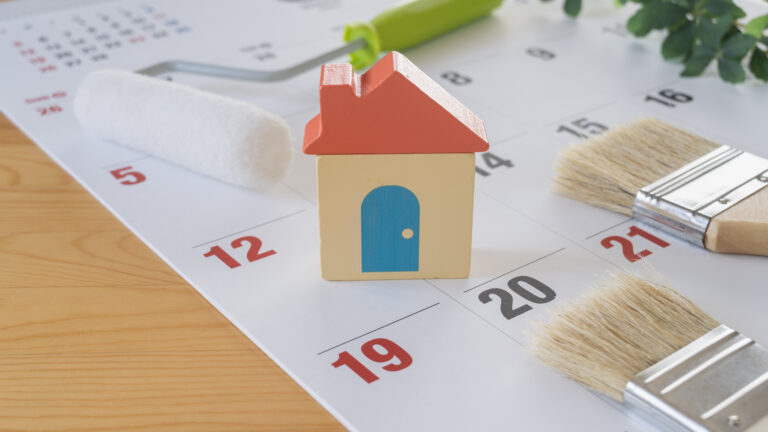How to Maintain Your Home’s Green Roof and Use it to Support the Environment
Table of Contents
Homeowners who are curious about green roofs often wonder what they could do with that extra green space. Could you grow vegetables, keep a beehive or collect rainwater? You also might wonder what kind of maintenance green roofs require. Will your green roof need more maintenance than it’s worth to you? We sat down with Shaw, IKO’s manager of technical and industry affairs, to get the answers to your questions.
Uses for Green Roofs
Many choose to have a green roofs for environmental reasons and therefore want to pack in as many beneficial features as they can. You need to partner with a green roof supplier that can design and install a roof that will fulfill these needs for you. Many features cannot be added after the roof is already installed, because they depend on the depth of the roof itself.
Before installing the green roof on your home, you must consider the added weight of soil, plants and retained moisture, particularly if you live in a climate that experiences regular snowfall. To do this, consult with your green roof design professional and a structural engineer.
1. How Do Green Roofs Help the Environment?
Eco-roofs combine many unique features to help promote environmental health and local biodiversity. If you want your green roof to do the same, you need to understand how it helps and choose your green roof system and plants with these goals in mind:
- Eco-roofs may reduce your energy usage from cooling and heating your home, and therefore reduce your greenhouse gas emissions.
- They may provide habitat and food for native plants, bugs and animals. To further this cause, choose native or even endangered species for your rooftop.
- Green roofs soak up stormwater, reducing its impact on local plant and animal habitats. Large enough green roofs, such as commercial vegetative roofs, may even reduce the risk of local flooding during heavy rain.
- This absorption of stormwater also improves local water quality.
2. Can You Collect Water Runoff from a Green Roof?
A green roof absorbs 60 to 100 percent of the stormwater that falls on it, according to Michigan State University. Can you collect and use that water?
“You can collect it, but I wouldn’t count on it being potable,” Shaw explains. He says that you can collect that water for plant irrigation, but definitely do not use it for human or pet consumption.
3. Can You Put Beehives on a Green Roof?
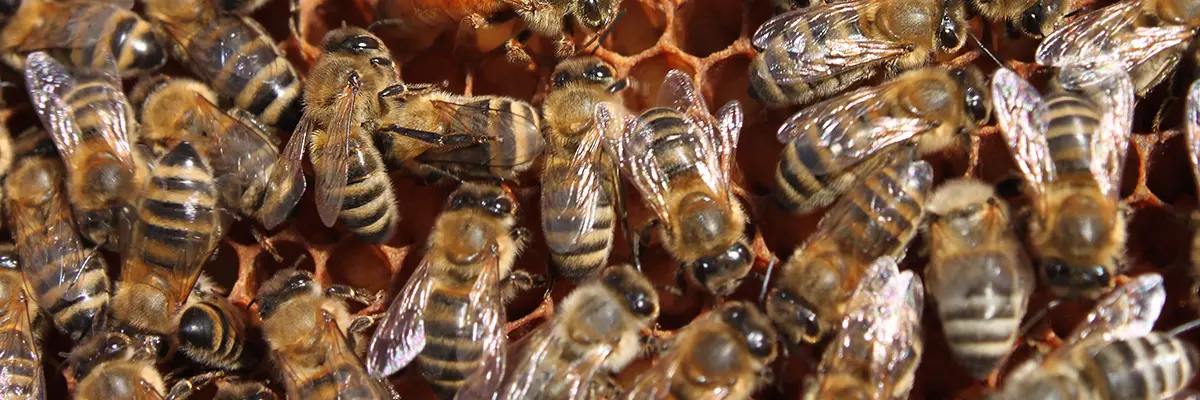
Yes, Shaw says that the bees won’t interfere with the roof. However, he does warn that you need to be sure the weight of the hive doesn’t “exceed any kind of structural load or weight limit.”
You need to add more containers over time as the beehive grows, which means more weight. So, find their maximum weight and ask your architect or structural engineer if the roof can bear that weight in one area. If a hive gets close to the weight limit, you can always split it in two. Further, if your roof slope is very low, in order to avoid ponding, move the bee hive frequently so it doesn’t have the chance to create an indent in the roof’s surface.
If you have your heart set on homegrown honey, it’s useful to know that it can be done. For example, the green roof on the Vancouver Convention Centre is home to four European beehives.
Please note that maintaining a beehive may be regulated in your jurisdiction, so please check any local bylaws as well as federal and state/provincial legislation to make sure you can legally maintain a beehive on your green roof.
4. Can Your Farm on a Green Roof?
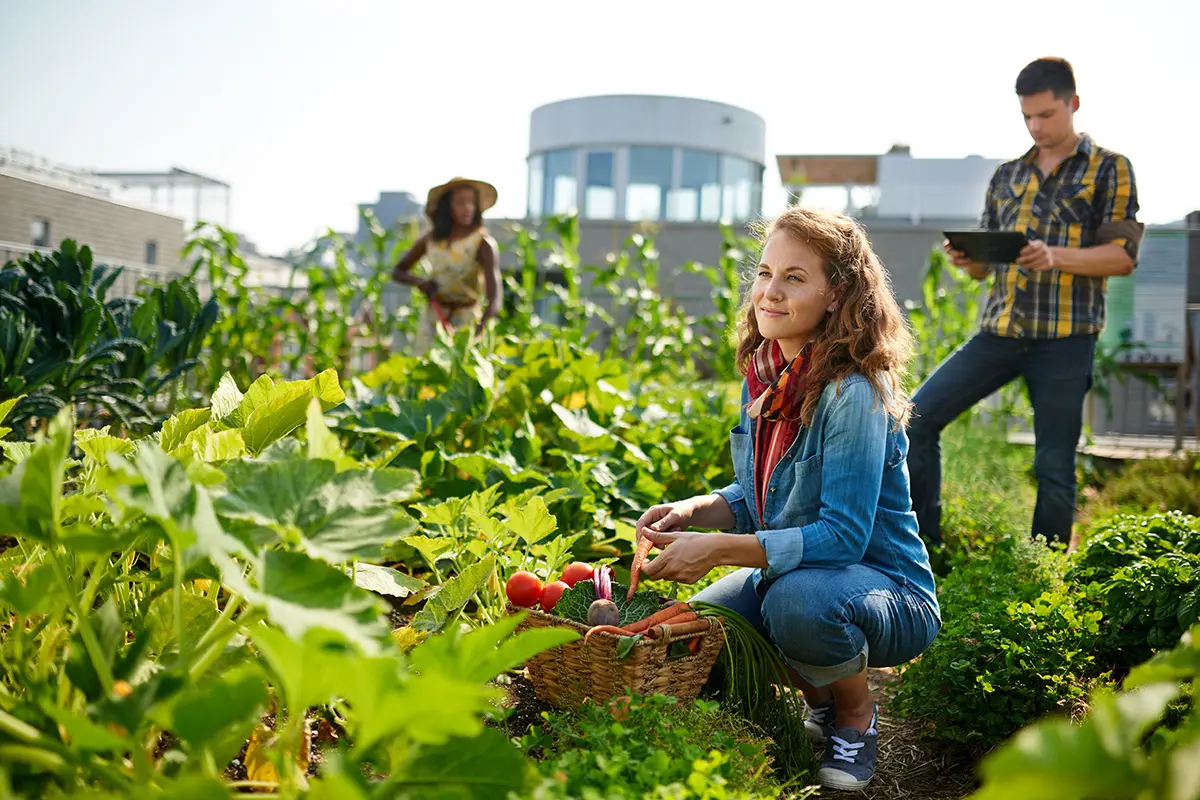
Shaw says that people grow food on their green roofs all the time. However, the green roof has to be designed to support the kinds of plants you intend to grow; so make your plans known to your architect, structural engineer and green roof system provider. If you want any large or tall plants, you’ll need a semi-intensive or intensive green roof.
5. Are Green Roofs Cost-Effective?
“No, because it’s landscaping,” says Shaw. “However, just as many folks accept the added cost of landscaping their yards, the cost of landscaping their roof may be acceptable.”
Shaw further explains that a green roof will have more costs associated with it than other roof systems because you must plan for ongoing maintenance. Most will have their plants trimmed, plus you may need to water the roof (and pay for that water), and you may need to buy replacement plants if some die or succumb to pests
“Green roofs are more for environmental and aesthetic reasons as opposed to having the most cost-effective solution for keeping water out of your home,” Shaw adds.
Though a living roof may not save you more money in utility costs than it’s worth, it may be a cost well worth paying for. Many people consider green roofs to be beautiful assets that are enjoyable to spend time on or near, especially if they don’t have a large lawn. Plus, an eco-roof could help you regulate your indoor temperature and boost the environmental health of your neighborhood.
To determine if the benefits you see from your living roof will outweigh the maintenance, you need to get an idea of what kind of maintenance your ideal green roof may need. We asked Shaw all about those potential maintenance needs.
How to Maintain a Green Roof
1. How Much Maintenance Does a Green Roof Require?
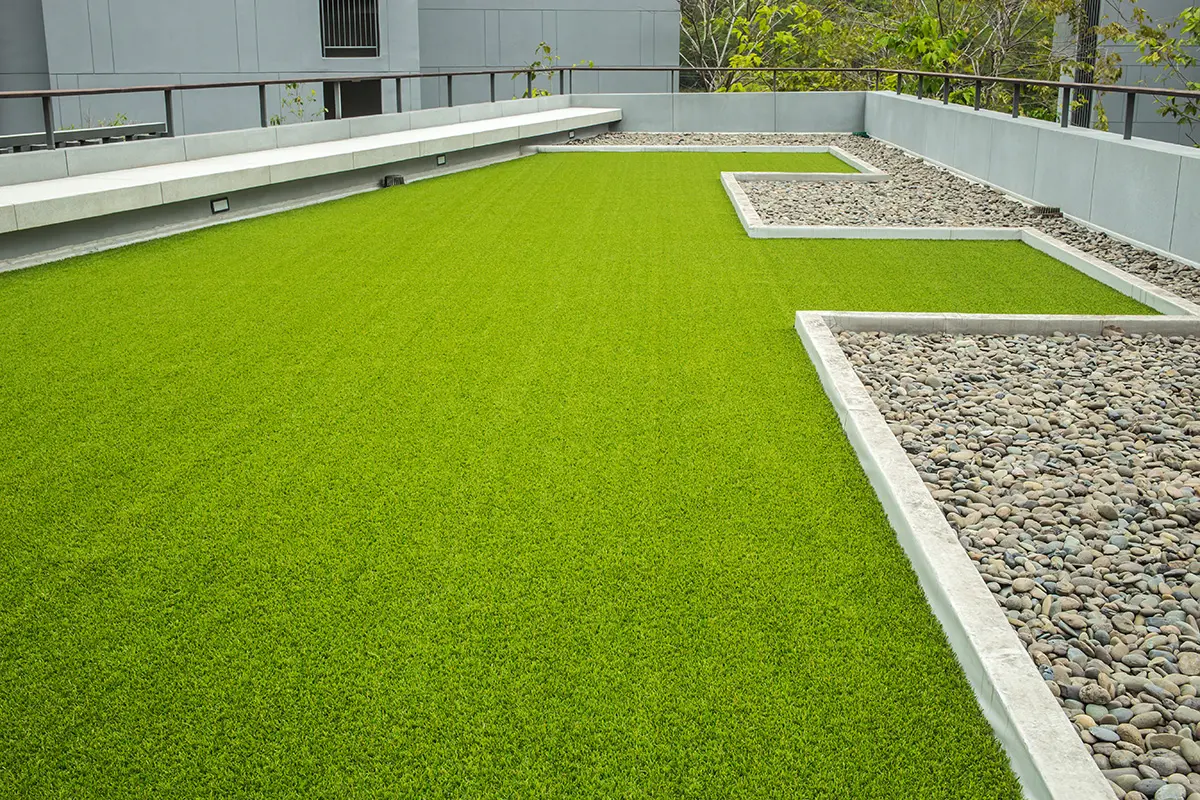
“A green roof is landscaping; it just happens to be up off the ground instead of down on the ground. And with landscaping, it all depends on what species of plants you have up there,” explains Shaw. “All of the things you have to worry about with landscaping, you have to worry about with green roofs.”
If you would be comfortable paying for the maintenance of a garden or lawn the size of your roof, chances are you’ll be pleased to put that same energy towards your rooftop. However, remember that you may not be able to do this maintenance yourself, as you likely don’t have the equipment or training to perform work on a rooftop.
Shaw recommends that you consider what maintenance you’d be willing to undertake before you select your plants. Moss or succulents generally have the lowest maintenance requirements, while a garden full of vegetables, flowers or trees will entail more work.
2. How Frequently Do You Need to Water Your Green Roof?
“It depends on the type of plants that are on the roof,” Shaw replies. “There are some green roof plants, such as sedums, that are drought-resistant and can withstand long periods without water. Then, there are other plants, especially flowers and vegetables, that will need more regular watering.”
The same goes for trimming the plants; some, such as grass, need to be mowed regularly, while others, such as moss, may only need occasional trims.
A professional landscaper can advise you on the kind of maintenance you can expect from the green roof plants you’re considering. They can also perform that maintenance for you. Just be sure to hire a landscaper who has experience with green roofs and who will follow proper safety protocols.
3. Are Pests a Problem for Green Roofs?
Just the same as any landscaping, a living roof could develop pests. Grasses may develop grubs, gardens may attract insects or birds that eat your vegetables, and even succulents have their own pests. If you develop pests, you’ll have to ask a landscaper for advice on how to handle them.
4. How Do You Protect the Green Roof During Winter?
Shaw suggests that you plant those species that can handle your environment, so you don’t need to make any special preparations for the plants.
“Your local environment will determine what plants are appropriate. If your area gets snow, and you’ve got plants that need to be protected from snow, you’ve got the wrong plants,” he says. You may love the look of sedum, but they may not be able to handle a freeze. Those who live in warm weather won’t be able to plant cold-weather perennials.
As for your green roof system itself, your green roof system provider can tell you if you need to prepare the roof for winter and how you can do so.
5. How to Repair Sedum Mats on Green Roof?
It’s always best to have a green roof professional or landscaper repair or revive the plants on your green roof. There are hundreds of varieties of sedum, all with their own needs and peculiarities. However, sedums are easily divided and re-planted, so it’s likely your landscaper will simply pull out the dead plant matter in the gap and put some new seedlings in. Or, if your green roof was planted in trays, your green roof supplier may simply swap out your dead tray for a brand new one.
6. Do Green Roofs Need Frequent Repairs?
“No,” Shaw replies, “With a normal asphalt roof, your whole roof is exposed to the elements. With a green roof, the roofing materials aren’t exposed. So, you’ve eliminated a major factor — the weathering of the waterproofing membrane.”
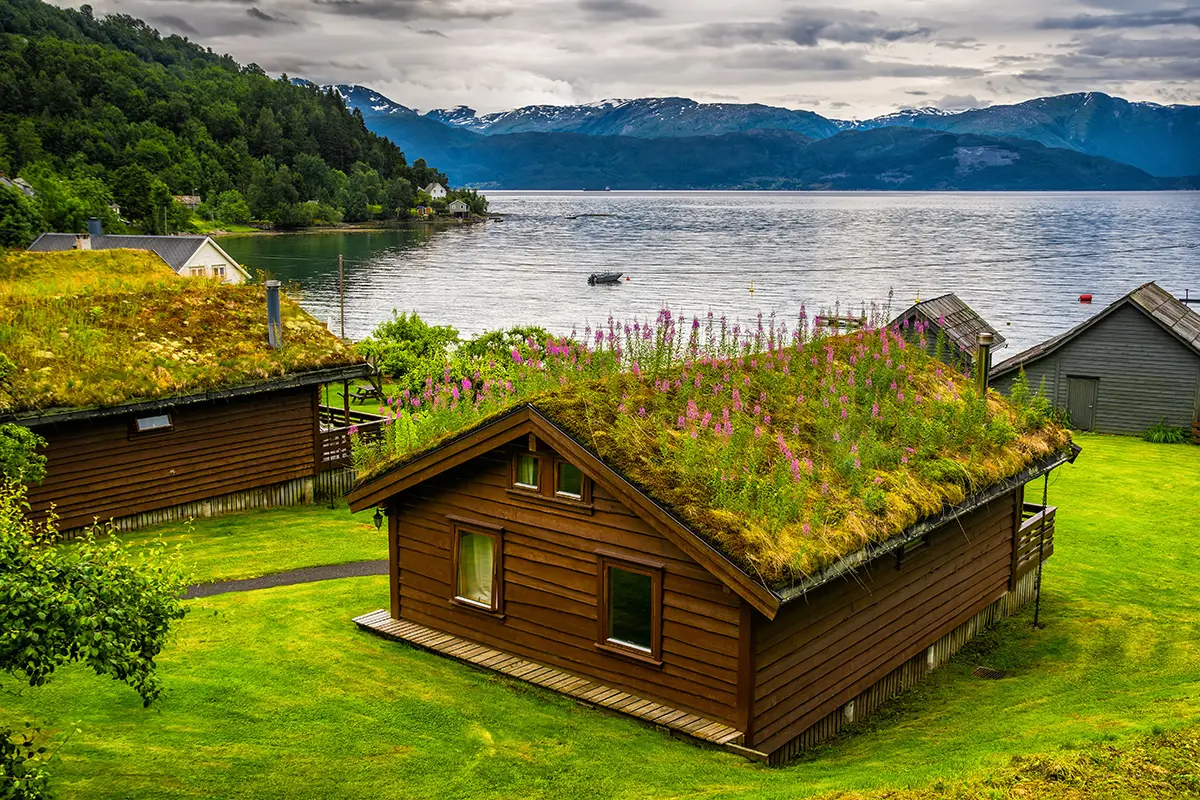
“The caveat there is that green roofs must have a root barrier, or the waterproofing membrane itself must be a root barrier,” he adds.
To reduce your likelihood of needing to repair your living roof, choose a system, from a reputable company, that seems well-designed and has a roof barrier. It is also vital to choose the right plants.
“Some species of plants are much more aggressive than others, in that the roots can penetrate through roofing materials,” Shaw explains. “Bamboo is the most notorious example. Its roots are very intrusive. In fact, there’s no green roof system provider that I’m aware of that would advise you to use bamboo.”
Still not sure if you should install an eco-roof? Shaw gives some final advice to homeowners considering their options.
“Be prepared and understand that your green roof is landscaping and will require maintenance,” he says. “Otherwise you will have a lot of dead plants up there that will dry up and blow away. Then, you won’t accomplish whatever you were hoping to achieve.”
Learn more about green roofs on IKO’s blog. If you decide green roofs aren’t for you, there are other roofing options that can make a big statement or help keep your heating and cooling costs low. Take a look at our many shingle options or learn about cool roofs.

